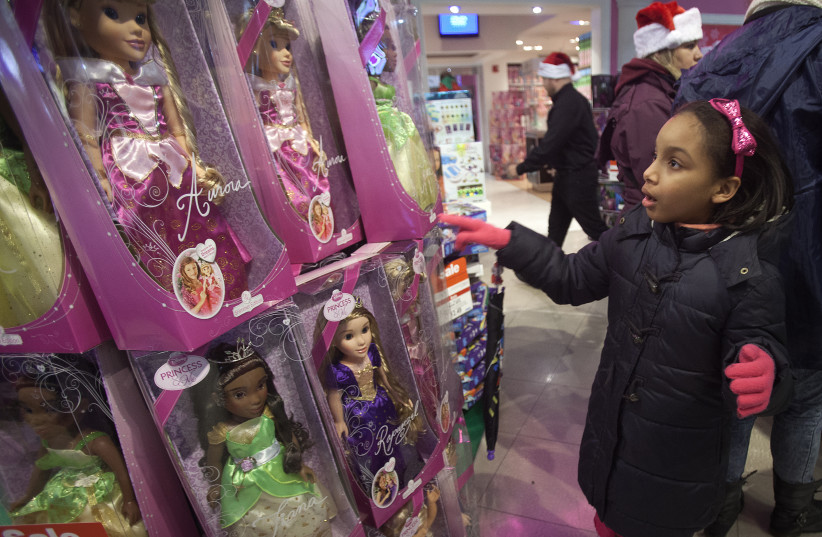The Walt Disney Company has been making films with beautiful princesses since 1937, when Snow White and the Seven Dwarfs premiered in theaters in the US and then around the world. Snow White was followed by Cinderella, Aurora, Ariel, Belle, Rapunzel, Jasmine, Merida, Tiana, Pocahontas, Moana, Mulan, Anna and Elsa, and Raya.
While this adoration, usually from young girls, continues to grow in terms of princess-movie ratings, some parents have wondered what effects these idealized images of young women might have on how their children feel about and express themselves.
According to new research from the University of California at Davis, a favorite princess improved and did not harm young children’s confidence in their own bodies and the diversity of the ways in which they chose to play.
“People are critical of Disney princesses,” said Jane Shawcroft, a doctoral student researcher in the communication department and the lead author the new study that was published in the journal Psychology of Popular Media entitled “Ariel, Aurora, or Anna? Disney Princess Body Size as a Predictor of Body Esteem and Gendered Play in Early Childhood.”
The team’s findings suggested that parents, caregivers and mentors should give those princesses another look.

Disney's diversity
Like Barbie, the Disney princesses have become more ethnically diverse and nonwhite over time. They can be divided into three body categories – thin, average and above average/heavy. For example, Moana from the 2016 film by the same name was coded as having an average body size. Princess Jasmine, from the 1992 film Aladdin was coded as being thin.
By far, the most popular princess among both boys and girls in this study was Elsa from the 2013 film Frozen and its sequels. The next most popular princesses were Moana followed by Anna, also from Frozen.
The study focused mostly on how the body type of a favorite Disney princess affects children’s body esteem, meaning how confident they feel about their own bodies, and their masculine or feminine play. These two criteria – body esteem and gendered play – are the most-cited concerns regarding Disney princesses among parents.
The team estimated body esteem by collecting responses from caregivers about how much their children liked, or felt good about, their bodies. A different assessment quantified children’s masculine or feminine play based on their choice of toys. Toy guns, for example, are considered stereotypically masculine. Pretty things and dolls are considered stereotypically feminine, the researchers said.
The study included 340 children and their caregivers living in the Denver area at the time of the study, which took place from 2020 to 2021. A little more than half the children in the study were girls, and about 84% were white. The team surveyed caregivers first when the children were three years old and again a year later to measure any changes in body esteem and gendered play.
Whether a princess was average or thin made a big difference in how the children who loved them felt about their own bodies and the way they chose to play. Children whose favorite princesses had an average body like Moana had higher body esteem a year later. These children were also more open to exploring play that was both stereotypically masculine and feminine, and this was true for both boys and girls, researchers said.
These effects were driven by how frequently the children pretended to be princesses when they played. The more a child pretended to be a princess – if their favorite princess had an average and not a thin body – the better they felt better about their own bodies and the more open they were to different types of gendered play, researchers found.
The authors suggested that Disney princesses with average bodies are more physically active in their stories.
“They’re running and climbing enormous mountains and fighting things. For these princesses, their stories are more about what they can do with their bodies than how their bodies look.”
An important finding, said Shawcroft, was that having a favorite princess who was thin did not change children’s body image or gendered play. Instead, the researchers described the benefits from having a favorite princess who has an average body as a protective effect for the young children who loved them.
“Princesses with average body size created a protective effect, strengthening how confident children feel about their own bodies and freeing them to play in different ways,” Shawcroft said.
She suggested that princesses with an average body size may even create a protective context for children’s development of body esteem and more diversity in children’s play experiences.
Shawcroft concluded that Disney princesses matter much more than most people believe, particularly for children – both boys and girls.
“With children’s media, people tend to be critical or dismissive of what kids, especially girls, like,” said Shawcroft. “Disney princesses really matter to young children, and we should also recognize that media centered on women and that tell women’s stories are important.”
